“All the great rabbis of this generation are saying that the Messiah is about to reveal himself. All the signs the prophets gave, all the signs predicted in the Gemara, the Mishnah, the Midrash, everything is taking place, one by one. All we need is to remain strong for a little bit longer.”
Rabbi Shlomo Amar, Former Sephardic Chief Rabbi of Israel, August 2020
As the world remains gripped in plagues of pandemic proportions, from billions of locusts to wildfires to storms to the coronavirus, it is easy to feel that the “end times” are close at hand. This year has been a year like no other. Several prominent Jewish religious leaders have claimed the Messiah will arrive shortly – that he must arrive, since the times as so bad.
From the Mishnah (post-Second Temple Period Jewish literature), we read that the era preceding the Messiah will be rife with societal corruption: “In the footsteps of the Messiah, arrogance will increase, prices will rise…the government will turn into heresy, and there will be no reproach…The meeting place of scholars will become a bordello…sin-fearing people will be detested, truth will be missing…” (Sotah 9:15). Other features of the end times include poverty, ignorance, and religious despair; and the Torah will be forgotten.
These religious leaders claim the Messiah will soon appear on Jerusalem’s Temple Mount, the holiest place in the world. Many Christian and Muslim leaders agree with this apocalyptic assessment. As calamities converge around us, they claim history will soon culminate with the appearance of God’s chosen emissary , who will usher in an age of peace and cooperation amongst the nations of the world. With that in mind, let us examine if history really is about to culminate, climax, converge, or even collapse, with the arrival of the most mysterious figure in history, the Messiah.

Panorama of the Old City of Jerusalem, looking west from the Mount of Olives across the Kidron Valley. The Temple Mount occupies most of the picture, from the far left lead-topped Al-Aqsa Mosque, to the golden-topped Dome of the Rock, to the far right where the trees stop. This is the very spot on which millions of people believe the Messiah will return and End Time will soon take place. ( Public Domain )
Culmination of History?
People around the world really began paying attention to prophetic fulfilment in 1948, a watershed year in history. In May, against all odds, David Ben-Gurion signed the Declaration of Independence, and the first Jewish state in 2,000 years was created. The exiles had finally been allowed to return home, fulfilling the words of Jeremiah: “I myself will gather the remnant of my flock out of all the countries where I have driven them and will bring them back to their pasture.” (23:3).
Isaiah meanwhile wrote: “He will raise a banner for the nations, and gather the exiles of Israel; he will assemble the scattered people of Judah from the four quarters of the earth.” (11:12). Then in 1967, the Israeli army took control of the Temple Mount – the first time in 2,000 years. However, the supernatural “Messianic miracle” that many expected to occur immediately after their victory did not materialize, and Israel was left to face very real-world problems, such as dealing with a surrounding hostile Arab world.
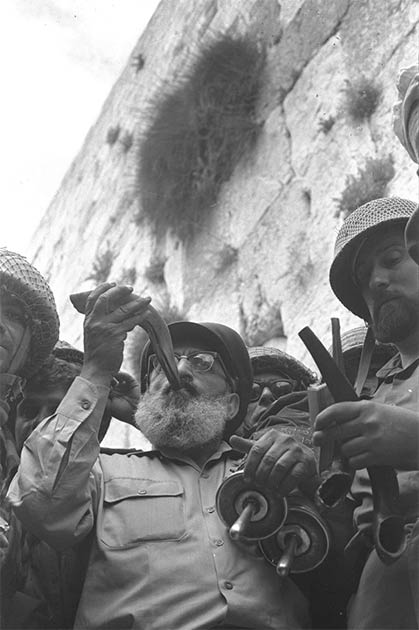
On June 7, 1967, during the Six Day War, Army Chief Chaplain Rabbi Shlomo Goren, surrounded by IDF soldiers, blows the shofar horn in front of the Western Wall in Jerusalem, declaring the Jewish return to the Temple Mount after a two-millennia-long absence. (Government Press Office (Israel)/ CC BY SA 4.0 )
The cognitive dissonance that many experienced after this “messianic failure” shifted talk in Israel towards more practical means of bringing about redemption. Debate broke out afresh among those who championed the traditional patient approach of waiting for the Messiah and a new, invigorated approach to pre-emptively build the Third Temple in order to bring about the Messiah. To this end, religious groups are now breeding pure red heifers for future temple sacrifices, and the ancient Jewish High Council, the Sanhedrin, has once again been reconvened after more than 1600 years.
Author and journalist Gershom Gorenberg best sums up the unique role of the Temple Mount in end-times scenarios: “What happens at that one spot, more than anywhere else, quickens expectations of the End in three religions. And at that spot, the dangers of provoking catastrophe are greatest.” It is the greatest flashpoint for war in the world and has in recent years become the focus of Jewish nationalism plus dozens of Christian Messianic movements, all aimed at building a third Jewish temple.
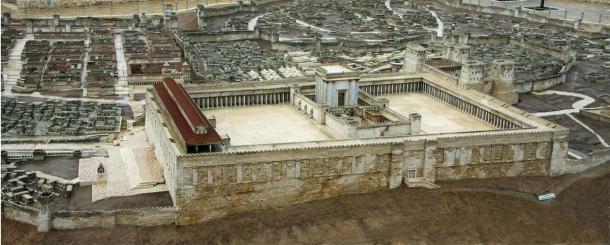
Model of the Second Temple. ( Mikhail Semenov /Adobe Stock)
Many, Many Messiahs
There is perhaps no better spot associated with Messianic claimants than the Temple Mount. This is because Messianic claimants were always connected with the lineage of King David. While the Mount presently features the Muslim “Dome of the Rock”, it had a long history before the Dome was built in 691 AD. Over 3,000 years ago, David was anointed there, and tradition holds that one of his descendants would one-day be crowned the “anointed one”, or Messiah (Massiach in Hebrew).
The prophet Isaiah describes the Messiah thus: “the Spirit of the Lord will rest on him, the Spirit of wisdom and of understanding, the Spirit of counsel and of might, the Spirit of the knowledge and fear of the Lord.” (11:2). There were many of these claimants through the centuries, many of them contemporaneous with Jesus, who is probably history’s most famous. Gospel genealogies trace him back to David, and his ministry was an attempt to fulfil ancient prophecies about the Messiah and restoration of Israel.
Jesus “proclaimed good news to the poor, healed the sick, restored sight to the blind, and raised the dead” in accordance with Isaiah, rode into Jerusalem on a donkey in accordance with Zechariah, and would be “forsaken and pierced but ultimately vindicated” in accordance with the Psalms of David.
On his cross was hung a sign mocking him as the “king” of the Jews. Despite his death, his followers believed he was resurrected and will come a second time as the Messiah. Where do they claim Jesus will re-appear as Messiah of the world? On Jerusalem’s Temple Mount.
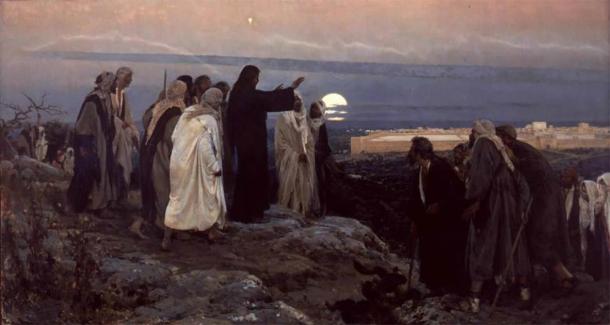
“Jesus weeps over Jerusalem” by Enrique Simonet (1892). ( Public Domain )
Jesus’ life was intimately tied to the Jerusalem Temple, ever since he escaped his parents when he was twelve years old and was found debating the priests. Only a few decades after his death, and supposedly in fulfilment of his own prophecies, the Temple was utterly destroyed by the Roman legions during the Jewish War for Independence (during which several “Messiahs” appeared and were killed, including Menahem the Zealot).
Muslims likewise see a redeemer Messiah figure appearing at the End of Days. Called the Mahdi, this figure is said to appear in the time before the Day of Judgment to rid the world of evil. He will appear alongside Jesus to defeat the False Messiah figure, Al-Masih ad-Dajjal. Then the resurrection and judgment of the dead will occur.
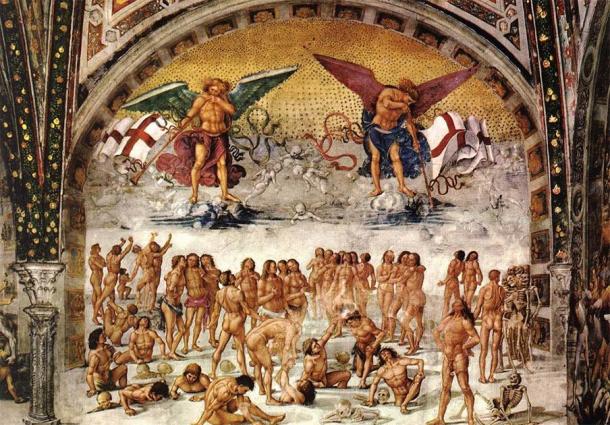
‘Resurrection of the Flesh’ (circa 1499-1502) by Luca Signorelli. ( Public Domain )
Another famous Messianic claimant was Rabbi Sabbatai Zevi. He had thousands of followers and announced his claim to David’s throne in Jerusalem in 1666 AD. When the Muslim Sultan offered him conversion to Islam or death, he chose conversion, shocking his followers. Despite the cognitive dissonance this generated, his followers continued to believe, calling themselves “Sabbateans”.
Heavenly Hysteria
Today, hundreds of people annually suffer from “Jerusalem Syndrome”, a questionable psychological condition experienced by some travelers to the holy city. They claim to have a strong desire to wear white, begin preaching before the public, sing hymns, and make a procession to a holy site. Some proclaim themselves the Messiah.
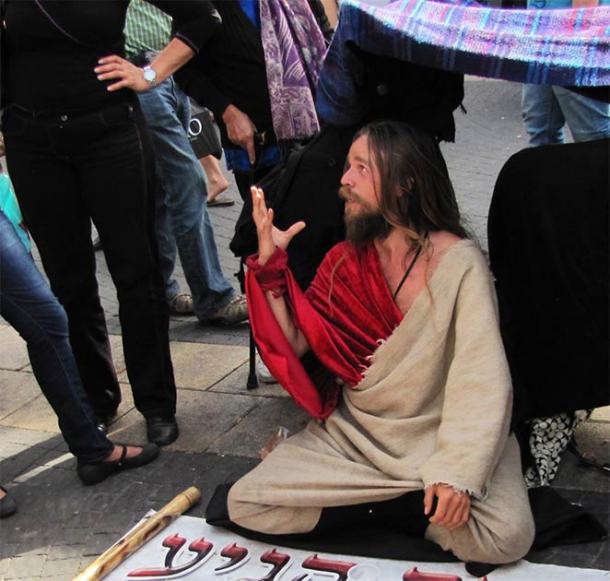
A man suffering from “Jerusalem Syndrome” in Tel Aviv, 2010. He claimed he was the Messiah. This is a common affliction in Israel. (Jacek Proszyk/ CC BY SA 4.0 )
After their experience, the majority return to their former lives, while a few remain in mental health facilities. Many believe Donald Trump suffers from “Jerusalem Syndrome”, believing he is a Messiah-figure to the Jewish people since so many have likened him to Cyrus the Great, the ancient Persian king and redeemer of the Jewish people.
The building of the third temple, whether involving the Messiah or not, would necessarily mean the end of Judaism as it is recognized today. The charity, prayer, and repentance demanded of Jews for the forgiveness of sins after the temple was destroyed, in lieu of sacrifices, would be reversed and the world’s 15-million strong Jewish population would once again be required to attend Temple services three times annually, bringing a suitable sacrifice for the altar each time.
This radical change would almost certainly create a crisis in Judaism that might see an internal schism and potential violence. Those against re-instituting the sacrifices point out that God did not actually need them: “For I desire mercy, not sacrifice, and knowledge of God rather than burnt offerings.” (Hosea 6:6).
However, this is not the first time apocalyptic hysteria has gripped a group of followers. We know that people lived in times of apocalyptic fever before, such as 1000 AD. As the millennium turned, tens of thousands of pilgrims flocked to Jerusalem expecting the return of Jesus, selling everything and freeing slaves.
A thousand years earlier, another group likewise believed in the imminent end of the world. Called the Essenes, they were active before and during the time of Jesus and may have even once included Jesus and his cousin John the Baptist among their numbers.
They emerged almost two centuries before Jesus, when they broke with mainstream Judaism, which they felt had become “Hellenized”. They founded an independent commune in the Judean desert near the Dead Sea. Separated from their orthodox brothers, they evolved their own unique brand of ritual and eschatology. Their writings survive today as the famous Dead Sea Scrolls.
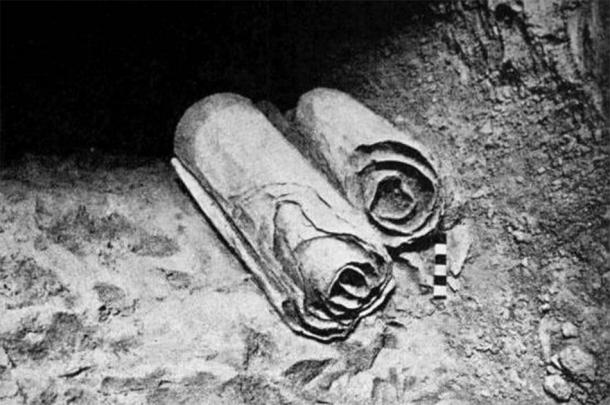
Two scrolls from the Dead Sea Scrolls lie at their location in the Qumran Caves before being removed for scholarly examination by archaeologists. ( Public Domain )
They were particularly interested in the imminent end-times war between the “sons of light” (them) and the “sons of darkness” (the world) that would take place in Jerusalem. The Messiah was to appear during this battle to usher in victory and the eternal righteous rule of Yahweh.
This imminent arrival of the End of Days was also a theme of Jesus, John the Baptist, and even Paul the Apostle. Jesus describes the terrible wars, famines, and upheavals that would soon precede the end of the world. In Mark 13:26, he describes: “At that time people will see the Son of Man coming in clouds with great power and glory.”
Paul writes not two decades later in 1 Thessalonians 4:16-17 that: “For the Lord Jesus himself will come down from heaven, with a loud command, with the voice of the archangel and with the trumpet call of God, and the dead in Christ will rise first. After that, we who are still alive and are left will be caught up together with them in the clouds to meet the Lord in the air. And so we will be with the Lord forever.”
“Don’t Immanentize the Eschaton!”
The biggest potential for violence today is people “rushing the end” – performing actions that might inflame the world and provoke a war, all because they feel they have no other choice. This idea was described by Eric Voegelin in 1952, who coined the phrase to “immanentize the eschaton”. The eschaton was viewed as the final supernatural stage of human history, which many wished to make immanent through their actions.
Current debate centers on waiting versus acting. Those who wish to wait argue that a natural act of God should clear the way for a Third Temple, such as an earthquake. Geologists agree that Israel is long overdue for an epic earthquake. Major quakes were recorded in the years 31 BC, 363 AD, 749 AD, and 1033 AD, while a smaller quake was recorded in 1927 AD. This side argues that only God can initiate the End of Times on his own schedule, and that by “forcing” the end, we ultimately delay the appearance of the Messiah.
Would a third physical temple solve the problems of Israel and the world at large? Likely not. History has taught us that corruption would inevitably break out (as it did in the two previous temples) and this could lead to further conflict. Multiple Bible verses speak of God not dwelling in a temple at all, and that only his name dwells in the temple. God is so vast and transcendent that he does not need a building.
Christianity says that the body of Jesus was the new temple, and that even now, the body of believers is a new temple. Muslims already consider the Dome of the Rock to be the third temple of monotheism, and they do not advocate a return to sacrifice and the priesthood. They do, however, strongly resist any push to desecrate their own shrines on the Mount and will go to war if necessary.
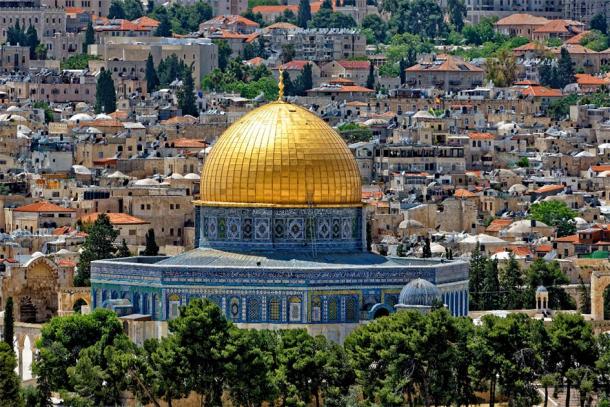
The Dome of the Rock, perhaps the most recognizable Muslim shrine in the world due to its pure golden covering. ( Bernhard /Adobe Stock) It currently stands where the ancient Jewish Temples once stood.
When we examine the long history of antagonism on the Temple Mount , we are confronting a paradox of paramount proportions. Can there ever be a peaceful resolution to the situation? We must still remember we have a choice.
Return of the Messiah and End of Time
The End of Days are not given a specific date in any ancient religious texts, and could therefore occur any time, or perhaps never. As Gorenberg noted, we can either rise to meet the Apocalypse with violence, or “resist that impulse and lower our hand.” Somewhere in the center lies the path of peace, the path of reconciliation.
Both Christianity and Islam took seed in environments of apocalypticism that encouraged their rapid spread lest the world not be saved before the Messiah appeared. A return to sacrifice would be a crisis for Judaism, its “end” as one author put it. Do we even need a third temple , since it would become inevitably corrupt, just like its previous two versions?
Theodor Herzl, the founder of Zionism over a century ago, saw a home on the mount for both structures. He felt it would be the ultimate example of ecumenicalism and cooperation and would much better fulfil the original visions of the ancient prophets, such as Isaiah. Both called for peace and prayer. For example, in chapter 11:10, Isaiah gives us a glimpse of this universalism: “In that day the heir to David’s throne (the Messiah) will be a banner of salvation to all the world; the nations will rally to him, and his resting place will be glorious.”
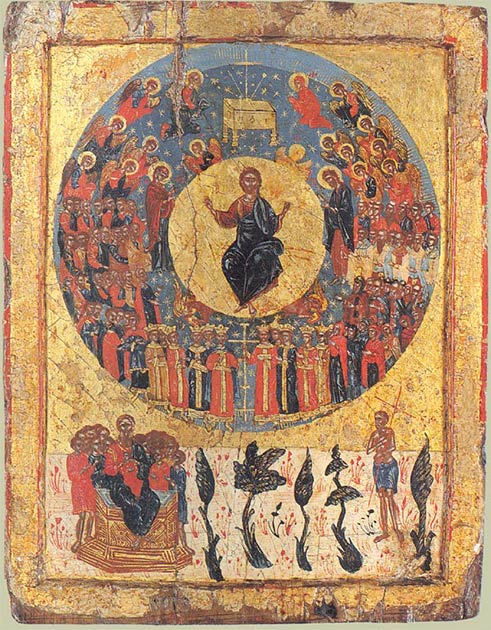
Greek Icon of the Second Coming. ( Public Domain )
Muhammed likewise called for peace, especially with people of “the Book” – Jews and Christians. If each side could focus on the ties that bind us as humans, then it could be possible to achieve this utopian dream. Jewish tradition suggests that there is actually a Messiah alive in the world in every generation, just waiting for the opportune moment to step forward. Such a future is always possible. Herzl recognized this over a hundred years ago: “Dreams are not so different from deeds as some may think. All the deeds of men are only dreams at first.”
Isaiah long ago shared his inspired dream of the future, that we may one day perhaps, millennia later, act upon it in earnest:
“Come, let us go up to the mountain of the Lord, to the Temple of the God of Jacob. He will teach us his ways, so that we may walk in his paths.” The law will go out from Zion, the word of the Lord from Jerusalem. He will judge between the nations and will settle disputes for many nations. They will beat their swords into plowshares and their spears into pruning hooks. Nation will not take up sword against nation, nor will they learn war anymore.” (2:3-4).
Top Image: Silhouette Jesus in the sunset. Source: artphotoclub / Adobe Stock
Jonathon Perrin is the author of Moses Restored: The Oldest Religious Secret Never Told , available in print or as an e-book from Amazon.com.
Related posts:
Views: 0
 RSS Feed
RSS Feed

















 October 7th, 2020
October 7th, 2020  Awake Goy
Awake Goy  Posted in
Posted in  Tags:
Tags: 
















